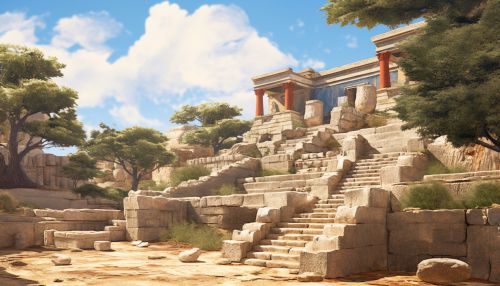Linear B
Origins and Discovery
Linear B is a script that was used for writing Mycenaean Greek, the earliest attested form of Greek. The script predates the Greek alphabet by several centuries and is the oldest preserved form of written Greek that we have. Linear B was first discovered by archaeologist Sir Arthur Evans in 1900 at the site of the ancient palace of Knossos on Crete.


Characteristics
Linear B consists of around 87 syllabic signs and over 100 ideographic signs. These ideograms or "signifying" signs stand for objects or commodities. They have no phonetic value and are never used as word signs in writing a sentence.
The syllabic signs are all simple shapes, making it easy to see that the script is syllabic in nature. In total, there are 96 syllabic signs, including vowel-only signs and syllable signs with a consonant and a vowel.
Decipherment
The decipherment of Linear B was primarily due to the work of Michael Ventris and John Chadwick. Ventris, a British architect and classical scholar, started working on Linear B in his spare time in 1940. His work was interrupted by World War II, but he resumed it in 1946. In 1952, he made a breakthrough by realizing that Linear B was a form of Greek, not a completely different language as many had assumed.


Usage
Linear B was used to record economic transactions and inventories, not literature or history. Most of the texts we have are lists of goods, with occasional short narrative descriptions. The script was used in the Mycenaean palaces to keep records of transactions and inventories.
Legacy
The influence of Linear B on later scripts is not clear. The Greek alphabet, which emerged centuries later, does not seem to be a direct descendant of Linear B. However, the presence of Linear B in the Greek world shows that writing was not a new invention when the Greek alphabet appeared.
